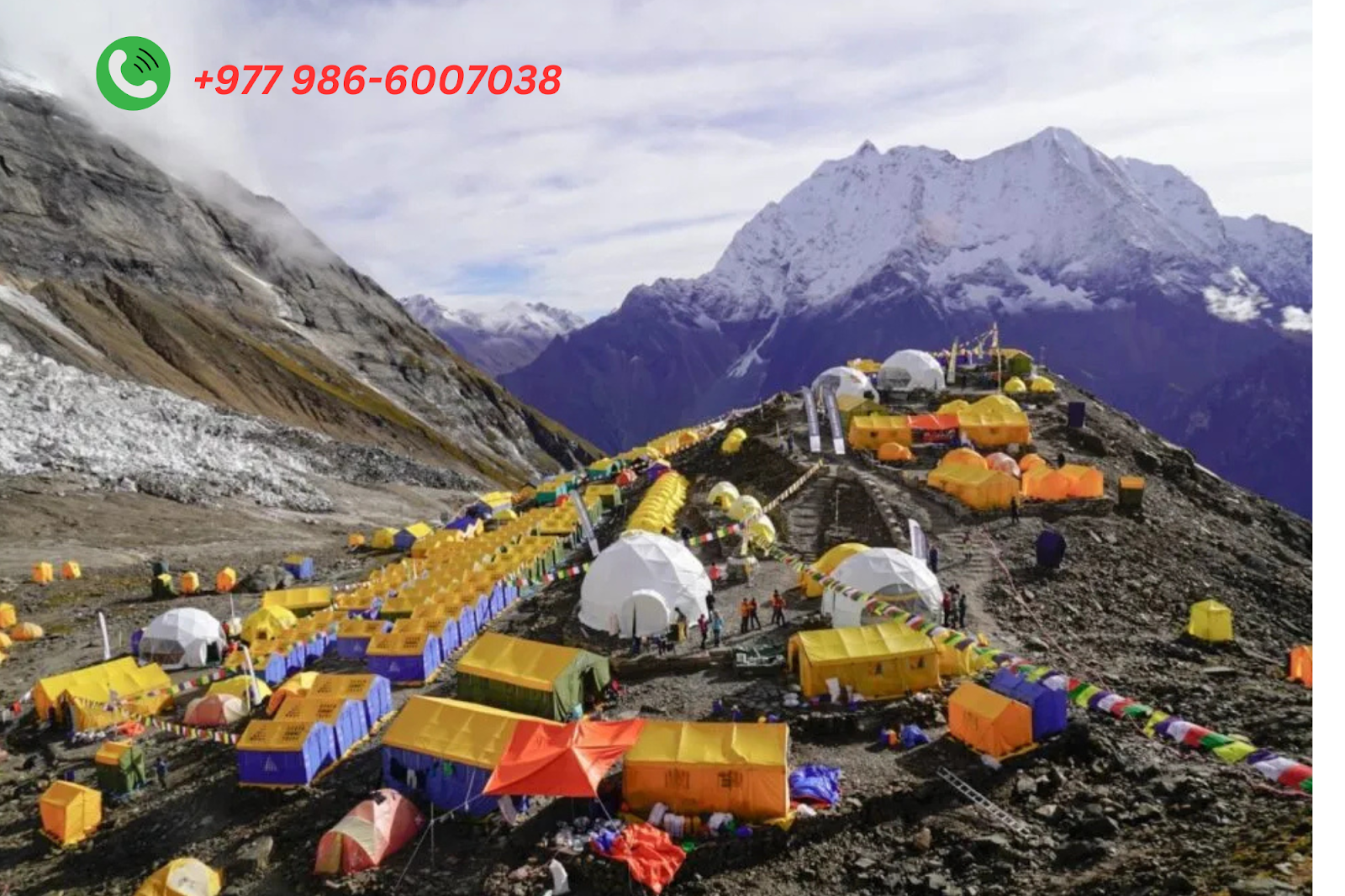
Trekking to Everest Base Camp (EBC) is one of the most exhilarating and challenging adventures in the world. At 5,364 meters (17,598 feet), EBC offers trekkers a unique opportunity to experience the natural beauty and cultural richness of the Himalayas, as well as a close-up view of Mount Everest. However, this trek is not without its challenges. High altitudes, extreme weather, rugged terrain, and physical strain all contribute to making this trek a demanding experience. The key to completing the trek lies in preparation, guidance, and expert support—especially from a Sherpa expedition team.
The role of Sherpas in the Everest Base Camp trek is integral, particularly when it comes to managing the challenges of high-altitude conditions. Acclimatization is key to avoiding altitude sickness, and Sherpas are experts at pacing trekkers and ensuring they take the necessary rest to ascend safely. Their experience allows them to recognize early signs of altitude sickness, and they take swift action to prevent it from becoming life-threatening. This knowledge gives trekkers the confidence they need to continue, even when faced with the trek’s toughest moments.
Alongside their technical expertise, Sherpas offer vital emotional support throughout the trek. The physical and mental strain of high-altitude trekking can be overwhelming, but the Sherpas provide constant encouragement. Their positive attitude, engaging stories, and shared humor uplift trekkers when doubt, fatigue, or homesickness sets in. The Sherpas are always there with a smile and a kind word, reminding trekkers of the incredible landscapes they are traversing and the significance of their accomplishment.
An essential aspect of the trek is the camaraderie between trekkers and their Sherpa guides. Sherpas foster a spirit of collaboration and mutual support, leading by example. They demonstrate the importance of respecting nature, maintaining a steady pace, and looking out for one another. This shared sense of teamwork builds lasting friendships between trekkers and Sherpas, and the unique perspective that Sherpas bring to the journey enriches the entire experience.
The Everest Base Camp trek and weather conditions create an environment where these bonds, both practical and emotional, become the foundation of a successful and memorable adventure.
An In-Depth Comparison of the Everest Base Camp Trek and Annapurna Circuit Trek
Trekking to Everest Base Camp is a dream for many adventure seekers, and one of the key factors that contribute to a successful and enjoyable journey is trekking with a Sherpa team. Originating from the Khumbu region, Sherpas bring unmatched knowledge, experience, and strength to the trek. While they may appear to be mere guides and porters, Sherpas are an essential part of the entire trekking experience, ensuring safety, comfort, and support throughout the journey. The bond between a trekker and their Sherpa team is not just about guidance; it’s about companionship and cultural immersion.
When comparing the Everest Base Camp trek versus Annapurna Circuit, Sherpa teams are made up of skilled individuals who are deeply familiar with high-altitude trekking. With their roots firmly planted in the Himalayas, they have a profound understanding of the terrain, weather patterns, and local customs. This knowledge enables trekkers to focus on the adventure ahead with confidence and peace of mind.
Trekking with a Sherpa team elevates the overall journey, enhancing safety and enjoyment. They expertly navigate you through challenging landscapes, while also sharing insights into the region’s rich culture, history, and spiritual heritage. The experience is more than just a physical challenge; it’s an opportunity to connect with the Himalayas on a deeper level. The presence of a Sherpa adds a personal touch to the trek, creating memories that last long after the journey is over.
In conclusion, trekking with a Sherpa team is a remarkable and unforgettable experience, offering not only physical support but also cultural and emotional enrichment. Whether you’re on the Everest Base Camp trek or the Annapurna Circuit, the relationship you build with your Sherpa team will be an integral part of your adventure.
1. Understanding the Role of Sherpas in the Everest Base Camp Trek
Sherpas are the backbone of any successful Everest Base Camp trek. These skilled and experienced guides are native to the Khumbu region and possess specialized knowledge about the terrain, weather, and culture of the region. They are vital in ensuring the safety, success, and enjoyment of trekkers.
1.1 Expert Guides and Navigators
The trekking route to Everest Base Camp is not just physically challenging but also geographically complex. The path involves steep ascents, descents, and sections where paths may be slippery or difficult to navigate, especially in areas where snow and ice are present. Sherpas, who are familiar with every twist and turn of the route, offer expert guidance and direction. They know which paths to take, the best resting points, and how to avoid potential hazards along the way.
1.2 Safety and First Aid
Safety is a top priority during the Everest Base Camp trek. While trekking at high altitudes, trekkers face numerous health risks, including altitude sickness, exhaustion, dehydration, and injury. Sherpas are highly trained in recognizing the early signs of altitude sickness, which can be life-threatening if not addressed promptly. They carry first aid kits and know basic emergency medical procedures, making them well-equipped to handle any health issues that may arise.
If a trekker shows signs of severe altitude sickness, the Sherpas can make quick decisions, including descending to a lower altitude, seeking medical help, or evacuating the individual if necessary. Their deep knowledge of high-altitude medical conditions can make the difference between a successful trek and a dangerous situation.
2. Physical and Mental Preparation for the Everest Base Camp Trek
A successful Everest Base Camp trek requires both physical and mental preparation. The physical demands of the trek are considerable, with long days of walking at high altitudes, often over rugged terrain. Mental resilience is just as important, as trekkers face exhaustion, physical strain, and moments of doubt during the trek.
2.1 Physical Fitness
Preparing physically for the trek is essential to ensure the body can handle the strenuous conditions. The trek typically lasts 12–14 days, and trekkers can expect to walk for 5-8 hours a day at altitudes ranging from 2,800 meters (9,186 feet) in Lukla to 5,364 meters (17,598 feet) at Everest Base Camp. The trail is not only long but also includes steep ascents and descents.
To prepare for this, trekkers should focus on building cardiovascular endurance, leg strength, and overall stamina. Hiking, running, cycling, and climbing stairs are all effective ways to build the necessary fitness. Strengthening the legs and core with exercises like lunges, squats, and step-ups will help trekkers tackle the uphill and downhill sections of the trek.
2.2 Mental Toughness
While physical fitness is essential, the mental aspect of the trek can be just as challenging. The thin air at higher altitudes can make breathing more difficult, and long days of walking can be physically exhausting. In addition, trekkers are often separated from their homes, families, and comfort zones for extended periods of time, leading to feelings of isolation or homesickness.
Sherpas play a crucial role in providing emotional support during these tough moments. They offer encouragement, share stories, and help trekkers stay focused on the goal of reaching Everest Base Camp. Their presence can make the emotional and psychological aspects of the trek much more manageable.
3. Acclimatization: Why It’s Crucial for Success
One of the most critical aspects of trekking to Everest Base Camp is acclimatization. At high altitudes, the air contains less oxygen, which can lead to altitude sickness, a potentially life-threatening condition if not properly managed. Acclimatization refers to the process of allowing the body to adjust to the lower levels of oxygen, and it is crucial to ensure trekkers remain healthy and avoid severe altitude sickness.
3.1 Gradual Ascent to Avoid Altitude Sickness
To avoid altitude sickness, it’s essential to ascend gradually. The Sherpas are experts in pacing the trek to ensure trekkers don’t ascend too quickly. They know when to take breaks, how to manage the trek’s pace, and when to schedule rest days to help trekkers acclimatize. Most trekking itineraries include rest days at higher altitudes to allow the body to adjust.
For example, trekkers usually stop in Namche Bazaar (3,440 meters) for an acclimatization day, followed by further stops in places like Dingboche (4,410 meters) and Lobuche (4,940 meters). These rest days not only help trekkers adjust to the altitude but also provide a chance to explore the local culture and surroundings.
3.2 Climbing High, Sleeping Low
One of the key acclimatization strategies employed by Sherpas is the principle of “climb high, sleep low.” This strategy involves trekking to a higher altitude during the day, then descending to a lower altitude to sleep at night. This allows the body to adjust to higher elevations without the risk of developing altitude sickness.
Sherpas implement this technique to help trekkers acclimatize safely, ensuring they have the best chance of completing the trek successfully and comfortably.
4. Navigating the Terrain: The Sherpa Advantage
The terrain along the Everest Base Camp trek is varied and demanding. From steep mountain paths to suspension bridges and rocky trails, the landscape can be unpredictable and difficult to traverse. Sherpas have extensive experience navigating these challenging terrains, and their knowledge is invaluable for trekkers.
4.1 Dealing with Steep Climbs and Descents
The trek to Everest Base Camp involves both steep ascents and challenging descents. On these portions of the trail, trekking poles, proper footwear, and steady pacing are essential. Sherpas are skilled at maintaining the right pace to avoid overexertion and ensure that trekkers don’t burn out.
They are also adept at guiding trekkers through the difficult, uneven sections of the trail, ensuring safety and comfort. The Sherpas’ ability to move quickly and efficiently through these areas helps maintain momentum on the trek.
4.2 Navigating High-Altitude Challenges
At higher elevations, the risk of avalanches, rock slides, and other dangers increases. Sherpas are familiar with these hazards and know how to navigate them safely. They monitor the weather and adjust the trekking route as necessary to avoid any risks. Their deep understanding of the terrain ensures trekkers remain safe as they make their way up to Everest Base Camp.
5. Cultural Insight and Local Knowledge
Beyond the physical and logistical support they offer, Sherpas also provide trekkers with invaluable cultural insights. Sherpas are deeply connected to the region, and their knowledge of the traditions, customs, and spiritual practices of the Everest region enriches the trekking experience.
5.1 Sharing Stories and Traditions
Sherpas often share stories about the history of the region, including the Sherpa people’s connection to Mount Everest. The Sherpas have a deep spiritual bond with the mountains, and many are Buddhist. Along the route, trekkers pass through monasteries, prayer flags, and sacred sites that are important to the Sherpa people. Sherpas help trekkers understand the significance of these sites and explain the role that religion plays in the lives of local communities.
5.2 Local Cuisine and Hospitality
Sherpas often introduce trekkers to the local cuisine, such as dal bhat (lentil soup with rice), momos (dumplings), and yak cheese. The hospitality of Sherpas, along with the warmth of local teahouses, makes the trek not only physically fulfilling but culturally enriching.
Conclusion: The Key to a Successful Everest Base Camp Trek
Trekking to Everest Base Camp is a remarkable adventure that offers breathtaking views, challenging terrain, and cultural experiences. However, the physical and mental demands of the trek can be overwhelming without proper guidance and support. A Sherpa expedition team is crucial for ensuring the safety, success, and enjoyment of the trek.
Sherpas provide expert guidance, ensure safety through their knowledge of altitude sickness and first aid, and offer valuable cultural insights. Their deep connection to the Everest region and their ability to navigate the difficult terrain make them the perfect companions for this once-in-a-lifetime journey.
By preparing physically and mentally, acclimatizing properly, and trekking with a skilled Sherpa team, you can experience the grandeur of Everest Base Camp safely and with confidence. The Sherpas will not only help you reach your destination but also make your journey richer and more meaningful, ensuring that the memories of your trek to Everest Base Camp last a lifetime.





